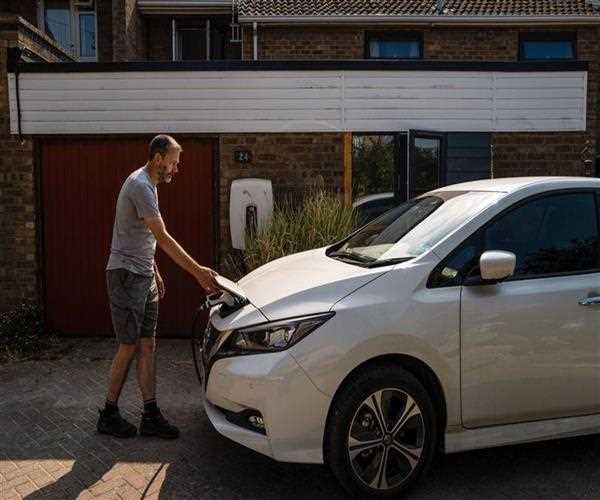
08-Mar-2023
Electric cars as a solution to the Europe’s energy crisis
With 13.3% of new passenger car registrations being electric vehicles (EVs), up from 9.5% the year before, 2022 is expected to be another record year for EVs. However, the EV industry's resilience, which has already been challenged by semiconductor shortages and rising production costs, is likely to be put to the test by skyrocketing electricity prices, particularly in Europe as a result of the war in Ukraine.
Although this is expected to be a short- to medium-term change as governments continue to advocate for low emission mobility, it may influence a renewed interest in internal combustion engine (ICE) vehicles as EVs become less affordable.
The energy crisis, particularly in Europe, is primarily attributable to the conflict in Ukraine. As Europe's economic position has deteriorated as a result of the region's reliance on Russian supplies, natural gas prices, which determine the cost of electricity, have skyrocketed in 2022.
The energy think tank Ember says that Germany's electricity prices increased by 466 percent annually in August 2022. According to the World Economic Forum, Russia was responsible for 55% of Germany's natural gas imports in 2021; however, by June 2022, this figure had decreased to 26%.
Due to rising residential and commercial EV charging rates and rising electricity prices in 2022, the notion of lower operating costs for EVs compared to ICE vehicles has diminished. Allego, a provider of EV charging services, raised charging tariff rates in the majority of European nations in September 2022 and has announced a subsequent increase for October 2022. For instance, the price per kWh of an ultra-fast charging unit (>50 kW) in France will rise to EUR0.98 from EUR0.79.
In addition, the cost of charging an electric vehicle at public charge points in the UK increased by 42% between May and September 2022, according to the breakdown service RAC. Even though electricity costs USD0.20 less per mile than gasoline (USD0.21) or diesel (USD0.23), the difference has become negligible.
However, EVs have faced more than just the energy crisis. Since the coronavirus (COVID-19) pandemic began in March 2020, automotive production has been impacted by shortages in semiconductor supplies. As a result, battery electric vehicles (BEVs), which typically require twice as many semiconductors as conventional vehicles, have been squeezed the most. After his initial estimate of 2023, Intel CEO Pat Gelsinger believes that the global shortage of semiconductors could last into 2024.
Consumers are dealing with a crisis in the cost of living as a result of a global recession in a stagflation scenario. Euromonitor Worldwide predicts the pace of worldwide expansion will reach 7.3% in 2022, up from 4.7% in 2021, in spite of the fact that it is normal to settle at 5.5% in 2023. Consumers may put non-discretionary costs like utilities and food ahead of big-ticket purchases like electric vehicles as a result of the rising cost of consumer goods.
In addition, the perception that electric vehicles are expensive purchases is getting worse due to rising inflation. The Voice of the Customer report from Euromonitor International states: In the Mobility Survey, the majority of respondents stated that they would not purchase an EV in 2022 due to its high price. In point of fact, the International Energy Agency (IEA) made the observation that the average sales weighted cost of battery electric vehicles (BEVs) in Europe and the United States will be between 45 and 50 percent higher than that of conventional vehicles.
Customers might think twice about buying an ICE car because of the high cost and rising cost of ownership of EVs. However, as long as governments continue to promote sustainable mobility, changes in consumer habits away from EVs are only likely to occur in the short to medium term with carbon emission reduction measures. By 2025, Norway, for instance, intends to prohibit the sale of new diesel and gasoline vehicles; In the meantime, the United Kingdom and France intend to implement this modification in 2030 and 2040, respectively.
Additionally, the sales of electric vehicles in 2022 have so far been strong. In August 2022, BYD reported sales of 174,000 electric vehicles, an 87% increase over the previous year. In the same time frame, Tesla, GM, VW, and other major automotive manufacturers have also performed well and experienced strong sales.
As per flow figures by Euromonitor Worldwide, 13.3% of new traveler vehicle enrollments are projected to be battery and module mixture electric vehicles in 2022. However, it is unknown if the industry will slow down in 2023 due to rising electricity prices, rising inflation, or slower economic growth in a more challenging economic environment.

SEO and Content Writer
I am Drishan vig. I used to write blogs, articles, and stories in a way that entices the audience. I assure you that consistency, style, and tone must be met while writing the content. Working with the clients like bfc, varthana, ITC hotels, indusind, mumpa, mollydolly etc. has made me realized that writing content is not enough but doing seo is the first thing for it.
Join Our Newsletter
Subscribe to our newsletter to receive emails about new views posts, releases and updates.
Copyright 2010 - 2025 MindStick Software Pvt. Ltd. All Rights Reserved Privacy Policy | Terms & Conditions | Cookie Policy